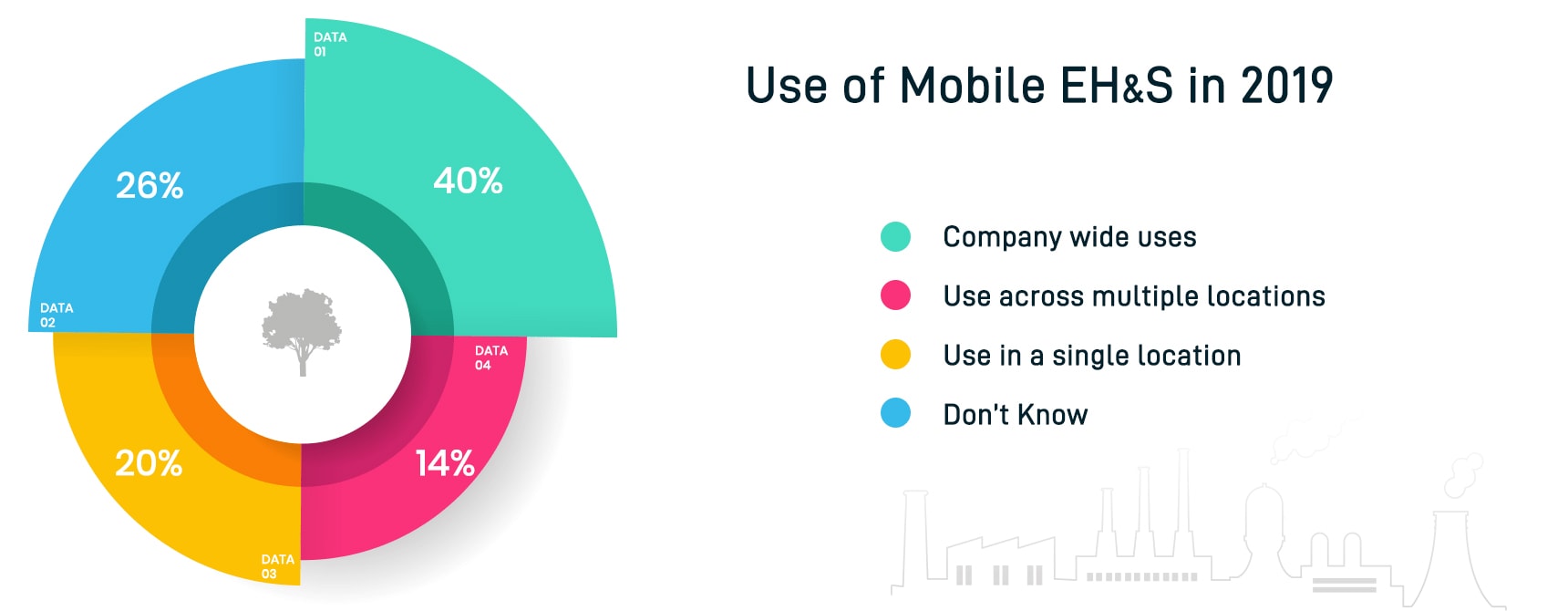Organizations today are challenged with improving EHS performance with fewer financial and human resources. A recent trend in the professional EHS community is to focus on using data in advanced analytic models to gain meaningful insight and run reports that drive change and performance improvements. The issue with this approach, however, lies in the barriers to performing advanced analytics successfully—such as the methods in which data is captured, and its structure, type, and quality. EHS consultancies are experiencing a transformational change towards the digitization of their value propositions. Virtually all EHS services firms have broadened their use of digital tools from environmental data management (EDM) software and EHS software implementation, to mobile apps, business intelligence tools, and IoT sensors.
The foundation of Environmental, health and safety (EHS) management was built keeping in mind the three main goals:-
- Minimize negative impact on the environment.
- Keep people safe.
- Making sure the operations are running productively and with minimal hassles. This means abiding strictly by the compliance regulations and looking for new ways to increase profitability while reducing incident rates.
Why Traditional EHS Management Isn’t Sufficient
The purpose of the existence of EHS management has remained the same, but the means to achieve them have changed as technology kept advancing, which further brought new risks, challenges and opportunities upon businesses.
Technological advancements have completely flipped the way organizations structure their business models, plan their processes and measure their performance. It means that there are more opportunities and new techniques to optimize business operations.

Even after nearly all the industries and businesses are openly adapting and embracing the digital culture, EHS management, unfortunately, is still stuck in the organizational structure as a traditional model that lack the data capabilities of mature processes. According to a research report close to 50% of companies believe that lack of cross functional collaboration is a top EHS performance challenge.
Digitalization of EHS focuses on integration of the every component of the business operating system, i.e. people, processes, technology and performance. EHS leaders can use this approach to identify opportunities for improvement and integration of EHS into business strategy.
There are 5 major reasons why digitalization of EH&S is not only beneficial but a pre-requisite for your business:
- Systematic: The digitalization of EHS incorporates process standardization, harmonized systems, and advanced analytics.
- Risk-based: Factoring risk into all processes through technology creates a dedicated approach for predicting and preventing adverse events.
- Connected: Digitalization promotes collaboration across different departments, locations, and processes, breaking down silos and integrating systems at every level of operation.
- Smart: The right tools can filter and analyze large volumes of data and are able to present it as useful information for data-driven decision-making.
- Agile: As surroundings change, EHS systems must fully adapt to the scalability and capability in order to create and deploy new processes as needed.
Improving asset reliability could drastically reduce equipment-caused injuries and environmental emissions. Combining your workforce with technology turns them into “connected workers,” who then become more reliable. With better situational awareness, exposure monitoring and understanding of ergonomic impact, the workforce can be more efficient while providing real-time data feedback to help higher-level processes improve. There is an excellent opportunity for EHS business owners to embrace digital transformation and explore the possibilities of smarter, quicker and better EHS.
